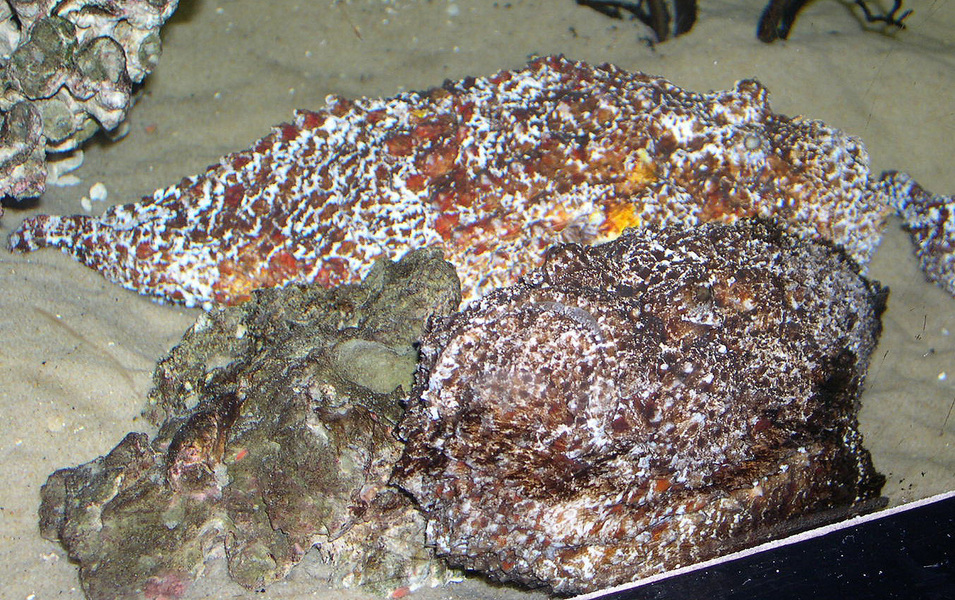What helps them survive?
Camouflage
It is important to note the specific appearance of the Synanceia verrucosa when first seeing it, if you can find it. The stonefish acquired this most common name from the cryptic coloration that helps it to camouflage into the surrounding environment. Depending on the environment it has adapted to, stonefish can be gray to resemble rocks, tan like sand, or even more brightly colored to blend into coral. The warts on the surface of the skin also help blend into the texture of the habitat. Some even have an interesting relationship with algae to help camouflage even more; this is described further on the interactions page. Below is an image of Synanceia verrucosa blending with rocks in an aquarium.
Venom
A main reason humans are so interested in stonefish is due to their adapted defense system. Synanceia verrucosa are labeled as the most venomous fish in the world. Without treatment, the toxin would cause an extremely slow and excruciatingly painful death, the effects of this on humans is further discussed on the interactions page as well. In short, the Synanceia verrucosa has thirteen dorsal spines, two pelvic spines, and three anal spines. There are two large venom sacs per dorsal spine, and smaller sacs on the pelvic and anal spines. Thus, in short-terms, this fish is “fully-loaded”. The Synanceia verrucosa is a slow-moving fish, but what it lacks in speed it makes up for in these stinging spines. The major active component of Synanceia verrucosa venom is the protein Trachynilysin. The venom is known as a neurotoxin, cardiotoxin, and a myotoxin. At cellular levels, it creates pores in cell membranes to increase its effects. Because proteins are denatured in heat, the best and most effective treatment for stings is actually to place the affected area in hot water and pain will disappear in less than thirty minutes.
Environmental stimulation
Venom is released from spines when nerves
on the surface of the skin are stimulated and trigger a response.
Other than its deadly spines, the Synanceia verrucosa has the same
sensory system as most fish. It has
two eyes and a lateral line to help it detect gravity and movements in the
water. Stonefish are very slow swimmers and
do not move often. They are also known to use their fins to hop along the
bottom of their habitat to move from one place to another. The stonefish uses its
pectoral fins not only to swim and hop, but more so to burrow deep into mud or sand when
hunting prey. To learn more about
the prey of the Synanceia verrucosa, continue on to the
nutrition page.
Back to home.
